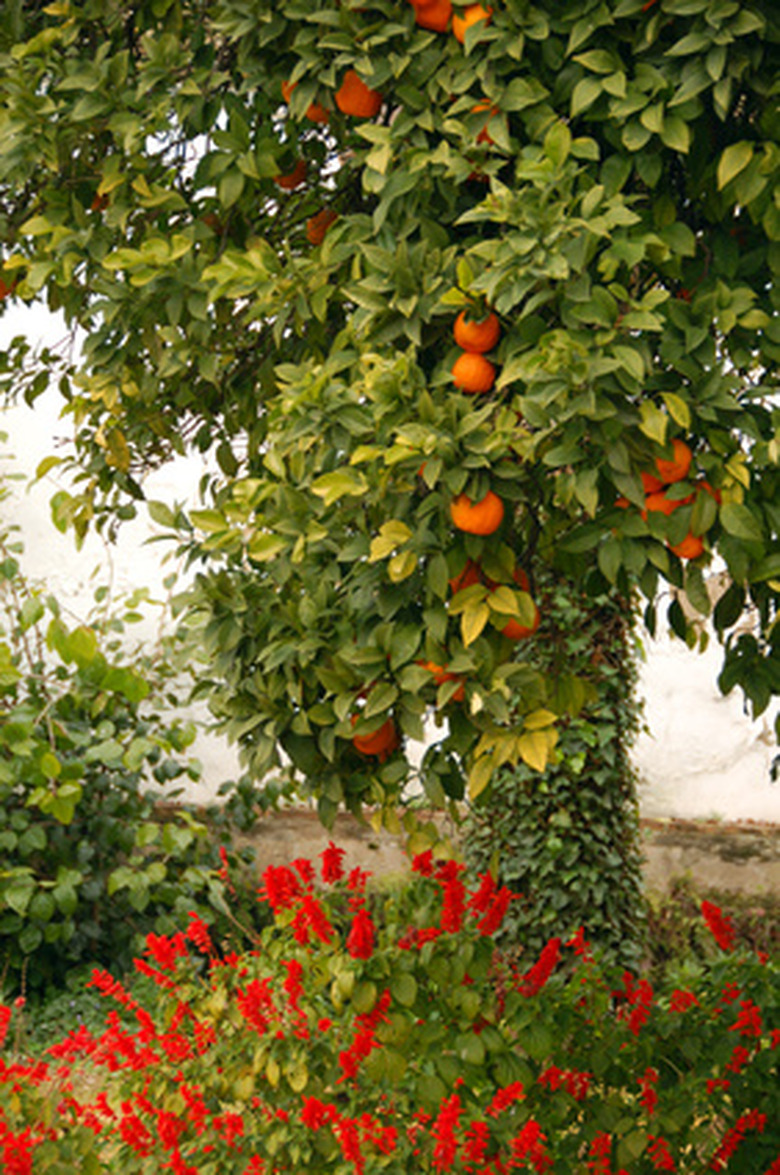The Identification Of The Leaves Of Fruit Trees
A fruit tree has more identifying features than just its fruit. Each variety has leaves with distinctive characteristics, such as color, shape and texture. Fruit trees may also have interesting bark or an unusual growth pattern. Almost all fruit trees produce white or pink blossoms in the spring. Some, such as citrus blossoms, are highly fragrant. After the flowers bloom, small fruits form in their stead and mature through the growing season.
Shape
Examine the leaf shape to identify the fruit tree in question. Apple, pear and cherry leaves are ovoid, tapering at the ends to a point. Peach and nectarine leaves are longer, more slender and ovoid. Peach and nectarine leaves fold inward at the center of the leaves. Citrus leaves are also elongated ovals, with a wing–or small, slender extra leaf–on the leaf stem or petiole. All leaves of these fruit trees have toothed or serrated edges. Apple leaves have the most deeply toothed edges; other fruit trees have leaves with finely or barely noticeable toothed edges.
- A fruit tree has more identifying features than just its fruit.
- Apple, pear and cherry leaves are ovoid, tapering at the ends to a point.
Color
Inspect the color of the leaves when identifying them. Apple leaves are sage to dark green with a silver hue. The leaves of pear trees are similar in color. Cherry leaves are deep green, while peach and nectarine leaves are bright green. Citrus leaves are dark and glossy.
Texture and Odor
Consider the texture of the leaf when identifying it. Apple leaves are thin with a fuzzy coating on the underside, while peach and nectarine leaves are somewhat thicker and have a bitter odor when crushed. Citrus leaves are thick and leathery and may be evergreen in warm climates.
- Inspect the color of the leaves when identifying them.
- Citrus leaves are thick and leathery and may be evergreen in warm climates.
Size
Consider the size of the leaf when identifying a fruit tree. Apple and pear leaves are 2 to 5 inches long, while cherry leaves are 2 to 6 inches long. Peach and nectarine leaves are 3 to 6 inches long, according to Purdue University, while citrus leaves grow 4 inches long.
Region
One simple way to identify fruit trees and their leaves is to consider where fruit trees are generally found. Citrus trees, such as lemon, orange and grapefruit trees, are not frost hardy and only grow outdoors in frost-free regions of the southern United States. Apples, pears and plums grow reliably in even the coldest regions. Sweet cherries, apricots, peaches and nectarines grow best in mild climates with some cold temperatures during the winter.
- Consider the size of the leaf when identifying a fruit tree.
- Citrus trees, such as lemon, orange and grapefruit trees, are not frost hardy and only grow outdoors in frost-free regions of the southern United States.
